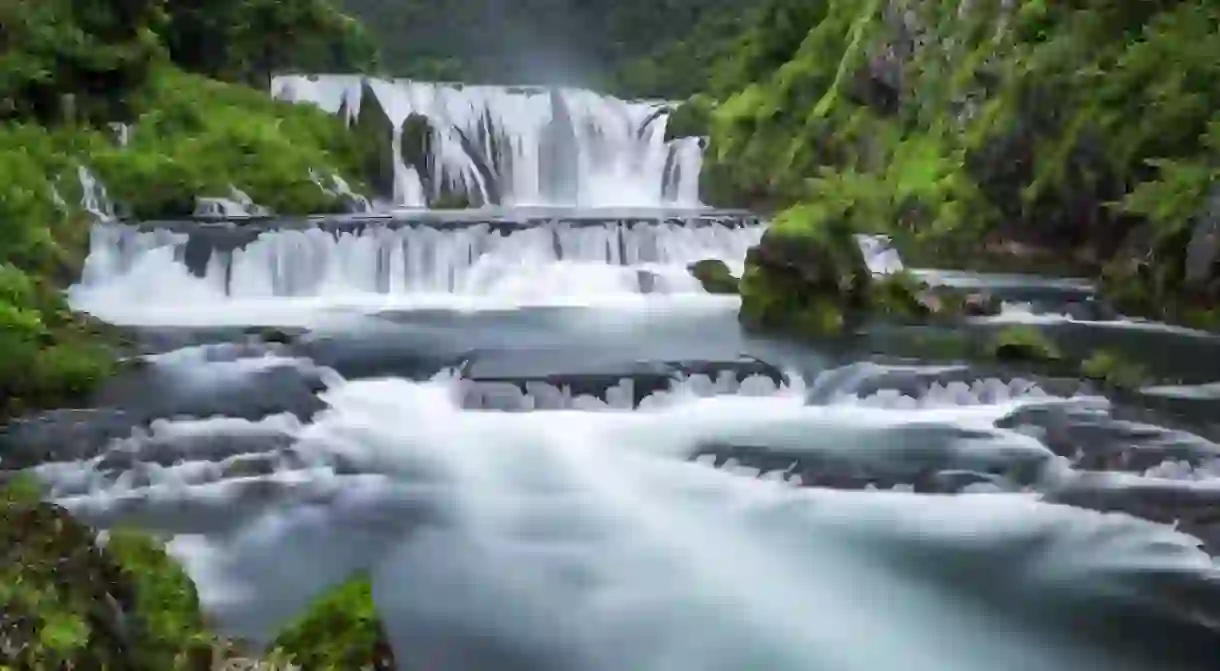How to Spend Two Weeks in Bosnia

Some backpackers like to plan an almost impossible whirlwind itinerary to see every inch of a country in the shortest time possible. Not only is this strategy tiring, but you miss out on appreciating, enjoying, understanding the destination you’re visiting. Here’s our suggested route for two weeks in Bosnia, covering all four regions and giving you the chance to admire and enjoy where you are.
Day One and Two: Mostar
Mostar is often the first port of call for visitors to Bosnia. Many travel from neighbouring Croatia on either a day trip or to begin their Balkan backpacking adventure. Herzegovina’s central city deserves two nights: one to explore Mostar and one to take a day trip to Medjugorje, Pocitelj or both.
Spend the first day strolling through Mostar’s old bazaar, the more modern Croatian districts to the west of the river and get the perfect photograph of the famous bridge, Stari Most. Buy souvenirs in the old bazaar and grab traditional food at the terraced restaurants overlooking the River Neretva.
Wake up early on day two and visit the Catholic pilgrimage site in Medjugorje where six teenagers claimed to have seen and spoken to Mother Mary. Millions of Catholic pilgrims visit each year. The UNESCO-listed medieval Pocitelj has a fort, 16th century Ottoman mosque, and branching cobblestone streets.

Day Three: Konjic
Konjic sits halfway between Mostar and Sarajevo. The town of approximately 26,000 could be 4,000 years old, making it one of Bosnia’s oldest permanent settlements. Picturesque Konjic lines both sides of the River Neretva crossed by Stara Cuprija. The dominating six-arched bridge has two claims to fame. It’s the last significant structure under the Ottomans in the 17th-century and marks the border between Bosnia and Herzegovina. Spend the day sightseeing, visiting Tito’s Secret Nuclear Bunker, and hiking in the canyons. If you have time, that is.

Day Four to Seven: Sarajevo
Bosnia’s capital has everything a tourist could want from the maze-like Ottoman core to the Austro-Hungarian Central European elegance in its shopping districts. Endless cafés serve up strong Bosnian coffee with restaurants having platefuls of cevapi. You can reach the surrounding mountains for hiking and skiing in less than 30 minutes. When you’re in the capital, join a tour to hear Sarajevo’s story and learn about the Bosnian War. Visit some of the museums and take a day trip to visit the Bosnian Pyramids in nearby Visoko.
If you’re not travelling on a shoestring, consider joining a tour to Srebrenica. Bosnia’s worst atrocity happened in this small eastern town where 8,000 Bosnian Muslim (Bosniak) men and boys were massacred in July 1995. Tens of thousands of others were expelled. Srebrenica is an integral part of Bosnia’s history and should be remembered by all.

Day Eight: Travnik
Daily buses leave from Sarajevo to Travnik, the former seat of the Ottoman Viziers between 1697 and 1850. A total of 28 protected buildings, including mosques, Travnik Castle and two clock towers, make up some of the attractions. You’ll find a few hotels in the town centre along with several bars and restaurants near the bubbling stream at Plava Voda.
Travnik is the birthplace of famous author Ivo Andric, who put Bosnia’s Visegrad on the map in his book: The Bridge on the Drina. Spend the night and explore the open-air museum that was once called the European Istanbul.
Day Nine: Jayce and Pliva Waterfall
Day nine brings you to the former capital of the Christian Bosnian Kingdom. Jayce has ancient structures including a 14th century church, Ottoman buildings, and an attractive old town. The fortress dominates the skyline, which was once the seat of Bosnian kings who later came to rest in Jayce’s catacombs. The small city of 30,000 acts as a hub to visit nearby Pliva Falls, formed at the confluence of River Vbras and River Pliva. The nearby lakes are favourite spots for hiking, kayaking, and canoeing. Old wooden watermills dot around some parts of the lake, too.

Day 10 and 11: Banja Luka
Banja Luka, Republika Srpska’s capital, to the north has an elegant centre and pedestrianised Veselin Maslesa Street lined with Austro-Hungarian buildings. Photogenic spots include the brown and gold Orthodox Christ the Saviour Cathedral and the Catholic sci-fi-like Cathedral of Saint Bonaventure. Kastel Fortress, which archaeologists believe to date back to Neolithic times, and Republika Srpska’s most famous mosque, Ferhat Pasha, are must-visit sites in Banja Luka, too.
Day 12 and 13: Tuzla
After Banja Luka, head east to Bosnia’s third city Tuzla. On the surface, Tuzla feels like another industrialised former Soviet city. But dig below the surface and you’ll find the rustic charm in the sinking old town, lavish displays of Austro-Hungarian wealth, and two mosques with unusually shaped roofs. Tuzla’s artificial lakes are also worth visiting.

Day Fourteen: Brcko
Brcko, Bosnia’s fourth autonomous region and the nation’s symbol of peace, sits 55 kilometres (34 miles) to Tuzla’s north. The River Sava forms the boundary between Bosnia, and Croatia, and the European Union to the north. Mixed demographics make Brcko somewhat special in post-war Bosnia, generating optimism for the cohabitation of Bosniaks, Serbs, and Croats.
Very few tourists come to Brcko, making it feel like an unexplored part of the Balkans. The main attractions sit along pedestrianised Trg Mladih and the Hapsburg yellow and orange City Hall (Gradska Vijecnic). Fontana Mladosti, a fountain with a boy and a girl holding a fish, is a nice spot for a photo, too. Be sure to check out Brcko’s oldest mosque, Atik-Saska Dzamija, dating back to the 17th century at the confluence of the River Sava and River Brcka.













